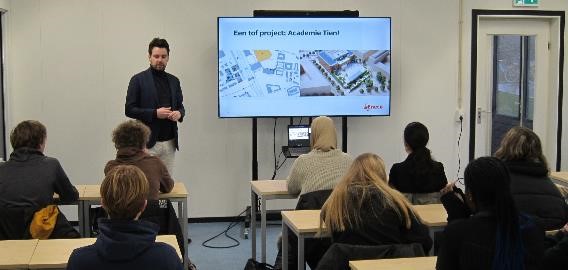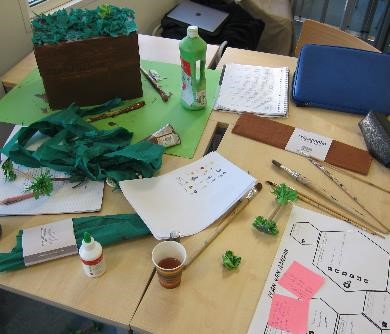MOST school-community-project in the Netherlands
What energy saving measures can be taken in a community with a particular focus on a new school building being built? At Academie Tien, a secondary school in the Netherlands, grade 10 students took the opportunity to set up school community projects (SCPs) for sustainability together with several stakeholders. The school is situated in a developing area of the city with many big companies in the neighborhood. Representatives from an energy company, Utrecht university, an IT company and someone involved in local community gardening introduced challenges and possible solutions for energy saving and preparing the community for energy transitions. One of their ideas being presented at a final open fair was to better use empty spaces on the roofs and use that for solar cells and roof gardens. The SCPs resulted in a rich variety of plans to stand up for sustainability together with community members.


The week started with introductions on energy from a local energy and an IT company, a researcher and a representative of a city lab (RAUM) aiming at creative placemaking. They presented current challenges like the energy transition, charging electric cars and net-constipation and the potential of gardens in urban areas. The 15-16 year old students brain stormed on possible ideas according to a method of appreciative inquiry. They created groups and plans for various topics that involved the stakeholders and community members.
A group of students calculated the gains of lowering the temperature in school with one or more degrees by using measurements and formulas for the area of the school and energy flow through roof, walls and windows. Other groups designed a dashboard and an app for smart charging and plans for (vegetable) roof gardens. The final day they got the opportunity to present their findings at a Fair in school. Local news published an article on this event and highlighted the importance of learning to understand and address the interests of various stakeholders in the community to stand up for sustainability.


The fair was a big success. Parents were impressed by the students’ ideas and their presentations with serious plans for sustainability measures. These ideas were not only dreams but their feasibility was underpinned with budgets, timetables and resources needed. What next? The stakeholders, parents, teachers and directors now need to act… Anyway, the students experienced and learned how to bring people together. The school will repeat this activity next year. Their new building will get a green house on a roof to grow vegetables and to “dance up on the roof” for a more sustainable future.
